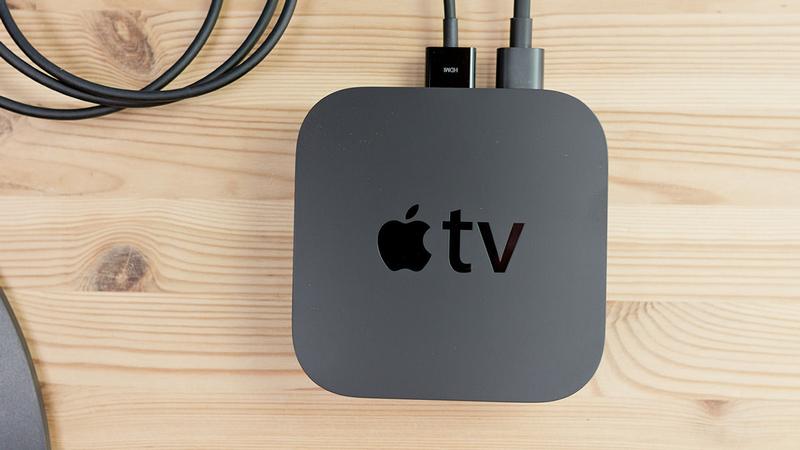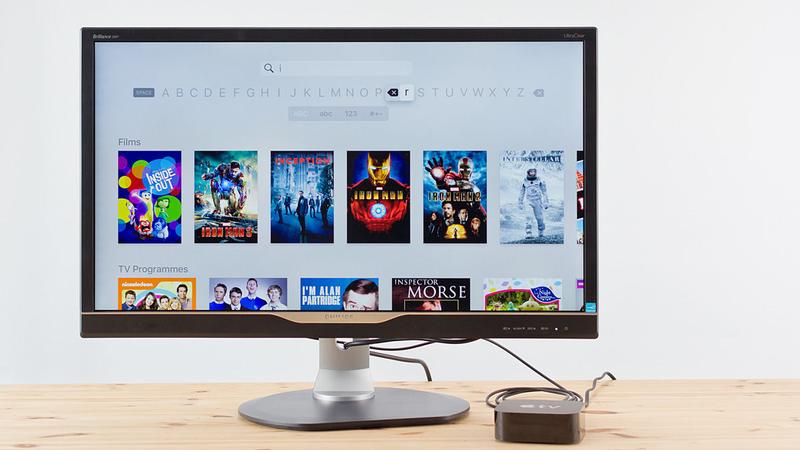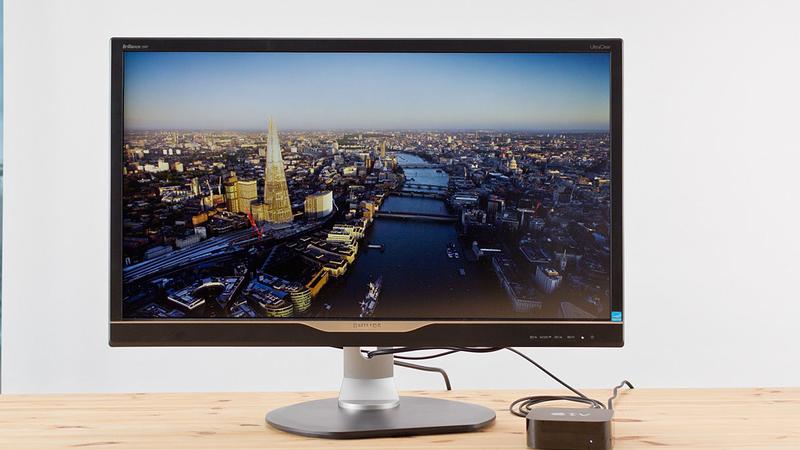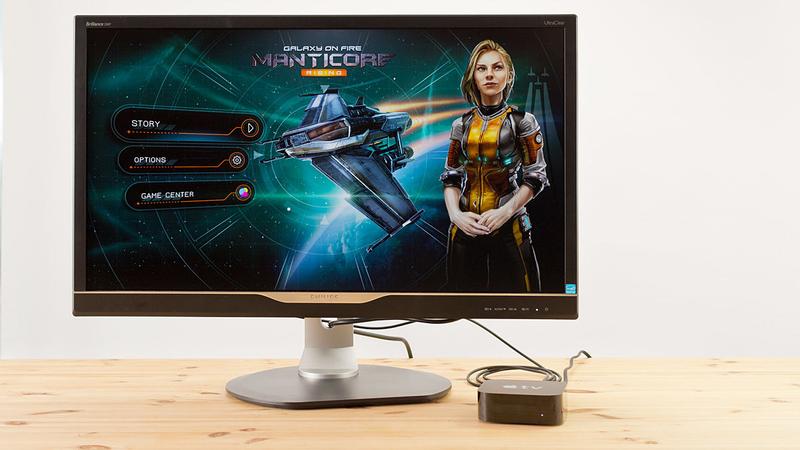Apple TV 4K review
At its September 2017 event, Apple unveiled the Apple TV 4K alongside the iPhone 8 and iPhone X, bringing 4K and HDR support to the Apple TV for the first time. But is 4K support enough to justify the extra £30 when compared to the fourth-gen Apple TV? We’ve spent some time with the Apple TV 4K, and here’s what we think.
Apple TV 4K: Pricing and availability
The Apple TV 4K is available in two models with different storage sizes from the Apple Store:
- 32GB (£179)
- 64GB (£199)
Apple isn’t the only option though, as it’s also available at a range of third-party retailers. For more information on that front, see where to buy Apple TV 4K.
Apple is also continuing to sell the previous fourth-gen Apple TV in a 32GB model at £149 – a slightly cheeky £10 price rise from what it was before the 4K version released, and is far from the £129 price tag at launch in 2015.
It’s also worth noting that competing gadgets such as Amazon’s Fire TV (£79.99), Google’s Chromecast Ultra (£69) and Roku’s Streaming Stick (£39) cost a lot less than Apple’s offering.
Apple TV 4K: Design and build
So, what’s new with the Apple TV 4K in terms of design and build? At a glance, not much; it features the same dimensions and weight (98 x 98 x 35mm, 425g) as the fourth-generation Apple TV, boasting a rather nondescript look that’ll let the all-black Apple TV fade into the background of any existing TV setup.
But, in our opinion, that’s just fine. While some set-top boxes like the Nvidia Shield TV boast a futuristic, eye-catching look, it’s not really needed – after all, you’re watching TV, not looking at the box.
The simple design means it should fit in with a range of TV setups, and even if it doesn’t, Bluetooth connectivity in the Siri remote means you can hide the box away in a cabinet and not have to worry about control issues.
It’s not exactly the same as the fourth-generation Apple TV though; the USB-C port present on the older device is not available on the Apple TV 4K. While the primary use for the port was for servicing and support and therefore not used by the majority of consumers, there were other (unofficial) uses for the port, including a way to take screenshots and record gameplay on the Apple TV.
And those hoping that Apple would re-introduce the Optical Out port on the Apple TV 4K will be disappointed – despite featuring more than enough space on the rear of the device to offer an Optical Out port, Apple chose to ignore the pleas of AV fans around the world.

But while the body of the Apple TV 4K is essentially identical to that of its predecessor, the included Siri remote has had a slight facelift. It sports the same basic design reminiscent of an iPhone with an aluminium back and glass front with a touch-sensitive panel and a range of media controls, but with one difference: the menu button has raised white edges, making it easier to operate the remote by touch only.
It’s a small difference, and one we initially questioned, but after using the Apple TV 4K in the dark we understood the reasoning. All the circular buttons on the remote are the exact same size, and without the raised edges of the menu button, you may exit the app or pause the movie you’re watching instead of closing it. Now, it’s easy to operate the Apple TV without even needing to look at the remote.
Besides, how else are all your friends supposed to know at a glance that you’ve upgraded to the Apple TV 4K?
Apple TV 4K: Features and spec
The Apple TV 4K boasts the latest version of Apple’s tvOS, tvOS 11, out of the box. It comes with a range of benefits including Siri support, a dedicated App Store and more – but what does the Apple TV 4K feature to tempt users away from the cheaper fourth-gen device? Well…
Specs and connectivity
Let’s start with the internals of the Apple TV 4K, most of which have had an upgrade when compared to the fourth-generation Apple TV. It boasts the A10X Fusion chipset which made its debut in the 10.5in iPad Pro and second-generation 12.9in iPad Pro, an incredibly powerful CPU and GPU more than capable of powering the 4K experiences offered by the new Apple TV.
It should provide gains in the gaming department too, with higher quality textures and increased resolution now possible. The A8 chip featured in the Apple TV 4 was decent, but the A10X makes a world of difference.
There’s also faster Wi-Fi; it features 802.11ac Wi‑Fi with MIMO and simultaneous dual band technology, along with a Gigabit Ethernet port, Bluetooth 5.0 and an IR receiver.
Of course, AirPlay is present, allowing iOS and macOS users to display content wirelessly on the Apple TV. Content includes photos and videos you’ve captured, along with streaming apps like Netflix and YouTube and even mirroring your entire display if you desire. It’s fast, simple and one of the most underrated features of the Apple TV.

4K HDR Content
Of course, the headline feature of the Apple TV 4K is 4K HDR support. The primary place that Apple hopes you’ll source your 4K content is iTunes, which recently started offering 4K movies.
There are benefits to this: if you own a HD movie, it’ll automatically be upgraded to 4K free of charge, and Apple has also decided not to charge more for 4K movies. This has had a knock-on effect on other services such as Amazon, which has recently brought its prices down to stay competitive with Apple’s offering.
But while 4K movies on iTunes is great, there’s also a downside: 4K content can only be streamed, not downloaded. We imagine this being due to the large files associated with 4K movies and the (arguably limited) storage available on the Apple TV, 32- or 64GB.
It also requires an internet connection of at least 25mbps, meaning those with a slower internet connection are effectively cut off from 4K content without an option to download it at a slower speed.
You can still download HD movies for offline viewing, but you won’t be able to stream your 4K iTunes content without a speedy internet connection.
iTunes isn’t the only destination for 4K content though; as long as you’ve got the 4K subscription, you can access a range of 4K TV shows and movies on Netflix. It’ll also be true of Amazon Prime Video once the app becomes available for download later this year.
But while YouTube would provide arguably the largest collection of 4K content, differing 4K codecs (Apple’s HEVC vs Google’s VP9) mean the app will be limited to 1080p playback for the near future.
Apple has also promised native 4K gaming on the Apple TV in the way of Sky, which was demoed at the September 2017 event. The game is due out in December, and we can’t wait to see how the A10X Fusion chipset performs with 4K gaming. Based on benchmarks from the iPads that feature the same chipset, we’ve got high hopes.

The question is: is the difference in quality between 1080p and 4K noticeable on the Apple TV? As long as you’ve got a 4K (HDR optional) TV, you can absolutely see the difference. The detail provided by the Apple TV 4K is way beyond what you’ll get from the fourth-generation Apple TV: highlights and shadows are detailed, colours are deeper and more vibrant and the images are so life-like, it’s like they’re about to jump out of the screen.
You can see the individual hairs on your favourite TV show protagonist’s face, and see the smallest detail of the darkest, dampest caves. Even when watching TV shows and movies you’ve seen before, it’s like a whole new experience, and you won’t want to go back to 1080p viewing.
Even Apple’s gorgeous aerial screensavers have been given the 4K treatment and look more stunning than ever. You can see the smallest details, like people walking along the streets of London and ripples in the river Thames, and it’s captivating.
On-demand services, apps and games
Of course, alongside all the 4K content available via the likes of iTunes and Netflix, you have an array of apps and games available to download on the App Store. From simple apps that let you track trending topics on Twitter to console-level 3D games like Oceanhorn: The Ocarina of Time, there’s something for everyone and is a great option for casual gamers.
Games on the App Store generally aren’t that expensive, and if you want a better gaming experience than what the Siri remote provides, there is a range of third-party controllers like the SteelSeries Nimbus that provide a high-end gaming experience. Take it from us; it’s a fun way to spend a rainy Sunday afternoon.
It is worth mentioning some omissions from the Apple TV’s collection though – especially when paying so much for a set-top box with the hope on catching up on the latest shows. While you’ll find Netflix, Now TV and BBC iPlayer on the Apple TV, you won’t find much else in the way of UK streaming services. There’s no All 4, My 5, ITV Player or UKTV Play, and although it’s coming later this year, there’s no Amazon Prime Video at the moment either.

Siri
Of course, one of the biggest benefits of buying the Apple TV over Android rivals is the inclusion of Apple’s virtual assistant, Siri. It’s on the Apple TV that the benefits of Siri really shine through; you can ask Siri to find you a specific TV show or movie and it’ll provide you with a simple interface showing where it’s available (iTunes, Netflix, etc) along with information about the show and more.
That’s not all either, as it can perform everyday commands like opening apps, handling queries and controlling HomeKit-enabled smart tech, and it can even rewind Netflix by 10 seconds if you ask “What did they say?”. It can even recommend movies for you to watch based on not only genre but year of release and more. Oh, and say goodbye to the annoying on-screen keyboard as you can dictate your password to Siri.
When it comes to discovering the power of the Apple TV, Siri is key.


Comments are closed, but trackbacks and pingbacks are open.